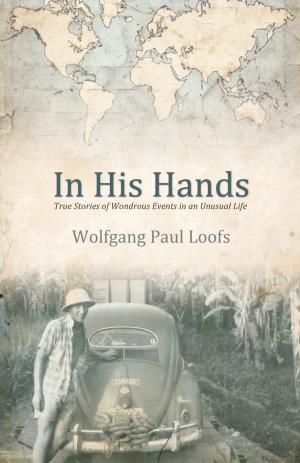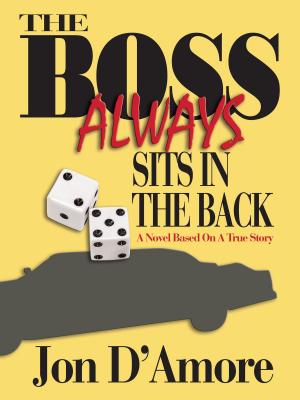| Author: | Kennedy Siboe | ISBN: | 9781370357321 |
| Publisher: | Kennedy Siboe | Publication: | June 24, 2017 |
| Imprint: | Smashwords Edition | Language: | English |
| Author: | Kennedy Siboe |
| ISBN: | 9781370357321 |
| Publisher: | Kennedy Siboe |
| Publication: | June 24, 2017 |
| Imprint: | Smashwords Edition |
| Language: | English |
It is not easy growing up in a little village on the slopes of Mt Elgon. It is even more difficult if that village is a marginalized, desolate place devoid of basic government infrastructure. In the eighties and nineties, the region was (and it still is) steeped in myth, custom, tradition and abject poverty. Almost every aspect of life was governed by superstitions and curious belief in mythical forces. Amid this ridiculous way of life, fierce ethnic jealousies and rivalry between the Sabaot and Bukusu communities were becoming increasingly difficult to conceal. Ultimately they would boil over in 1992.
My remembrance of my early days is a life of penury and astounding ignorance. I was surrounded by myths, tears, jiggers, hunger, illicit brews and ethnic conflict. Of all these, ethnic rivalry and tension gained prominence. Everything, from childhood games to adult relations had an ethnic dimension to it. As a matter of fact, apart from this heightened ethnic consciousness, the only other constant in our lives was poverty. Little boys and girls, their feet ravaged sore by jiggers, would stage meaninglessly painful duels to demonstrate the superiority of their tribe while elders concluded their illicit beer parties in acrimonious arguments over tribal relations. Weakness was frowned upon and you earned respect by not only demonstrating that you were fearless but also provoking someone from the other tribe into a fight and beating them resoundingly. A group of boys would organize fights between any two boys at some inconspicuous location and almost everyone would be present to watch the vicious exchange of kicks and blows. Bound by honour, no one dared refuse to fight when his combat was arranged. No one consulted you when scheduling the fight, but you had no right to reject the invite. You just fought when your day came. It was more honourable to have your nose bloodied than to chicken out of a fight. Later on, fanned by political differences, this ethnic rivalry degenerated into full scale ethnic violence with far-reaching ramifications.
Poverty, alcoholism, ignorance, negative ethnicity and marginalization. These things destroyed many. Emerging from such a background to lead a normal life needs determination. This is my story; a story of hope amid deprivation and senseless blood-letting.
It is not easy growing up in a little village on the slopes of Mt Elgon. It is even more difficult if that village is a marginalized, desolate place devoid of basic government infrastructure. In the eighties and nineties, the region was (and it still is) steeped in myth, custom, tradition and abject poverty. Almost every aspect of life was governed by superstitions and curious belief in mythical forces. Amid this ridiculous way of life, fierce ethnic jealousies and rivalry between the Sabaot and Bukusu communities were becoming increasingly difficult to conceal. Ultimately they would boil over in 1992.
My remembrance of my early days is a life of penury and astounding ignorance. I was surrounded by myths, tears, jiggers, hunger, illicit brews and ethnic conflict. Of all these, ethnic rivalry and tension gained prominence. Everything, from childhood games to adult relations had an ethnic dimension to it. As a matter of fact, apart from this heightened ethnic consciousness, the only other constant in our lives was poverty. Little boys and girls, their feet ravaged sore by jiggers, would stage meaninglessly painful duels to demonstrate the superiority of their tribe while elders concluded their illicit beer parties in acrimonious arguments over tribal relations. Weakness was frowned upon and you earned respect by not only demonstrating that you were fearless but also provoking someone from the other tribe into a fight and beating them resoundingly. A group of boys would organize fights between any two boys at some inconspicuous location and almost everyone would be present to watch the vicious exchange of kicks and blows. Bound by honour, no one dared refuse to fight when his combat was arranged. No one consulted you when scheduling the fight, but you had no right to reject the invite. You just fought when your day came. It was more honourable to have your nose bloodied than to chicken out of a fight. Later on, fanned by political differences, this ethnic rivalry degenerated into full scale ethnic violence with far-reaching ramifications.
Poverty, alcoholism, ignorance, negative ethnicity and marginalization. These things destroyed many. Emerging from such a background to lead a normal life needs determination. This is my story; a story of hope amid deprivation and senseless blood-letting.















